Piston Slap: Cray-Cray Thoughts On Periods of Great Progress
Hagerty Community member TingeOfGinge writes:
Dear Sajeev,
Your Piston Slap column never fails to entertain and educate. Here’s one for you: In what timeframe do we think the most important, most durable advances in automotive technology — and subsequently, automotive ability — took place, and what were they?
My proposal: 1953–60. We started with a 6v charging system, manual brakes, and flathead motors. But we moved to the 12v system the industry would use for the next 60+ years, power-assisted brakes, and high-compression, overhead valve ubiquity.
Now, as a millennial, I didn’t have the joy of experiencing these technological developments as they happened, but I’m sure some in the Hagerty Community did. And they have plenty of tales to tell about how X technology made their dad/uncle/brother’s “New For [insert model year]” vehicle so much better than the one it replaced.
Sajeev answers:
This is a question with multiple correct answers, and it changes over time. I wouldn’t be surprised if all the PhD-level chemists, physicists, engineers, etc. working on battery technology will one day come up with a formulation that makes our current EV frustrations resemble the machinations of people living in the dark ages. And doing so would improve the performance, price, and reusability of said EV battery at a monumental level. But that’s a future we have yet to (or may never?) see, so let’s discuss what might be the most important historical time periods for advancements in automotive technology.
Your time period (1953–60) is indeed a great one. My favorite time period is the Malaise Era (1973–83, approximately) because of the breadth and depth of improvements to automobiles and the societies that rely on them. We can and should hate this era more than any other, and trust me, I used to be one of the haters.


Here’s a little sugar to help the medicine go down: The Malaise Era ushered safer designs, better fuel economy, cleaner exhaust emissions, and superior luxury/NVH controls. And many of these benefits came from two bits of underlying technology: computers (inside and out of the vehicle) and extensive use of plastics on interior and exterior surfaces.
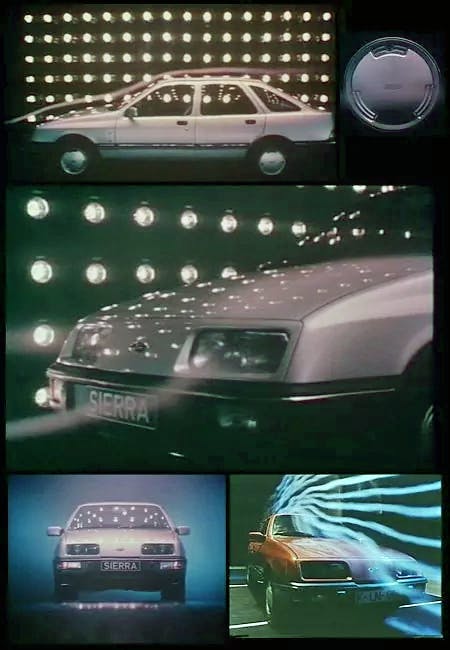
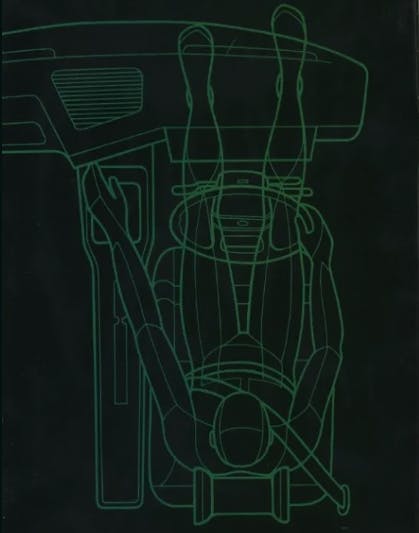
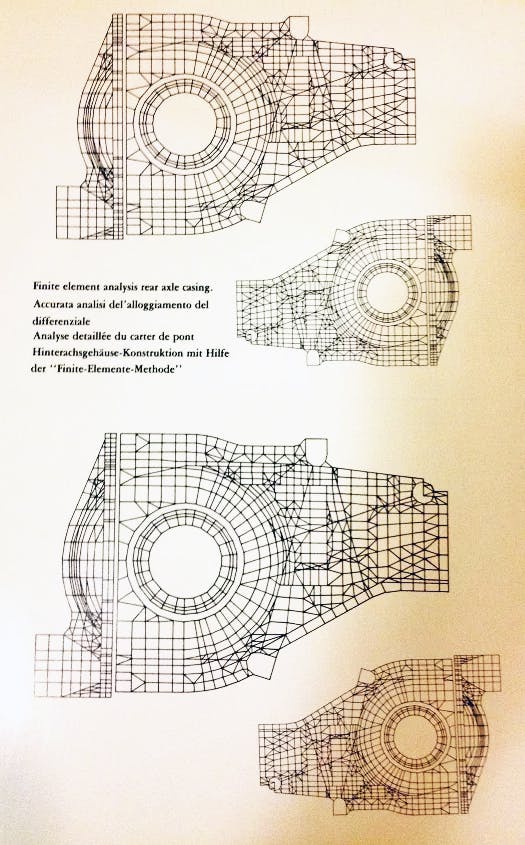
The photos above show the fruits of our Malaise-y computing efforts: aerodynamic modeling, interior ergonomics, and finite element analysis. I condensed all three computing advancements into a singular vehicle: The late-malaise revolution that was the 1982 Ford Sierra.
This Ford and the luxury-oriented Audi 100 were design and engineering tours de force for the time, lack of emissions controls outside of North America notwithstanding. They’d both get stomped on by a pancake catalyst-equipped, 8.1-liter Cadillac Eldorado in that regard. (The “Eldog” also had Malaise Era plastics, but the less we discuss of that the better.)
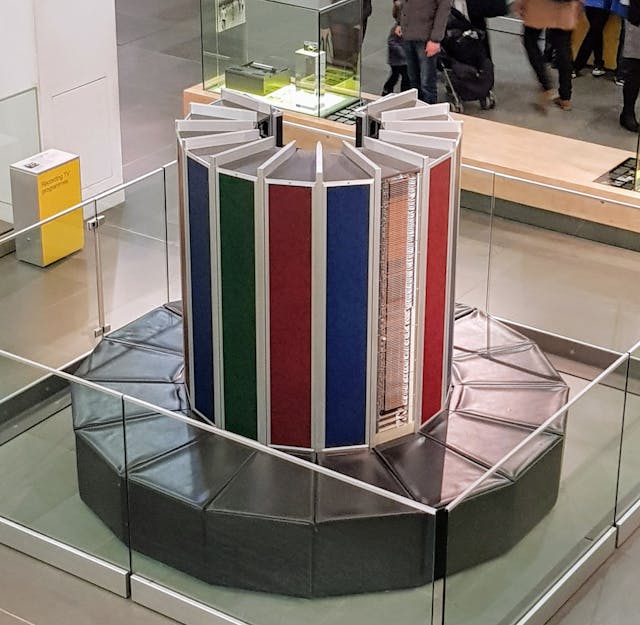
Let’s discuss in a little more depth the technology that made the Malaise Era a good (relevant?) time period in automotive history. While plastic panels and pleather interiors could owe a debt of gratitude to a singular creator, reducing Malaise Era computing to one hero is pretty easy: Meet the Cray-1 Supercomputer from 1975. According to computerhistory.org, it was 10 times faster than its competition, had over 60 miles of wiring, and drew 115 kW of power (about 10 households worth of juice). Depending on configuration, these sold for about $7.9 million dollars in 1977 (over $41 million in 2024), with a total of 80 units made.
The ring of benches around the Cray-1 was a nice touch, likely reducing uneasiness and fatigue when the malaise of a polyester-clad engineer’s work begins to rest heavy on their soul. But the folks behind Malaise Era automobiles endured, surviving the dark times, making our lives better in the process.
I’ve had a hard time finding an OEM press release that specifically thanked this electronic game changer for being the genesis of our modern automobile. But press releases of the era do suggest computer aided design was created and shared across multiple departments for faster production with fewer errors. Odds are, their rudimentary modeling came from a Cray supercomputer or three. Which is pretty cray-cray-crazy if you ponder on that notion.
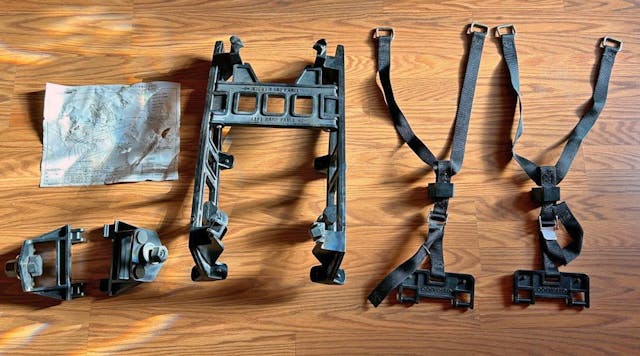
While the Malaise Era may not be the best answer for TingeOfGinge’s question, it is definitely in the top 10. Maybe top 5? What say you, Hagerty Community?
Have a question you’d like answered on Piston Slap? Send your queries to pistonslap@hagerty.com—give us as much detail as possible so we can help! Keep in mind this is a weekly column, so if you need an expedited answer, please tell me in your email.
***
Check out the Hagerty Media homepage so you don’t miss a single story, or better yet, bookmark it. To get our best stories delivered right to your inbox, subscribe to our newsletters.
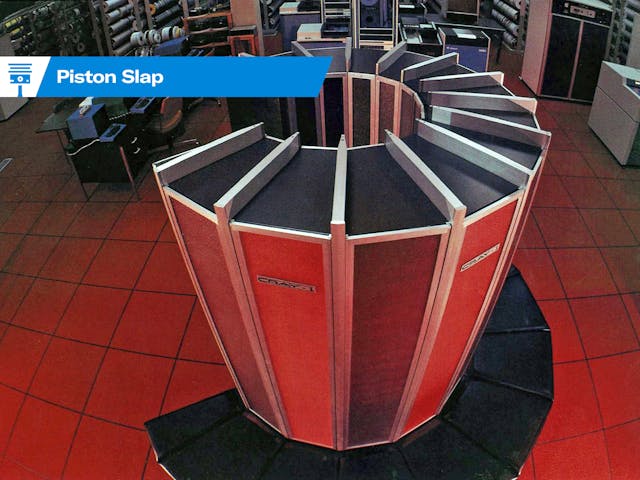


1955 Chevrolet –frame, suspension and running gear that was standard (though not necessarily the best) for 40+ years, and approaching 70 if you count the modern pick up which has more in common with a 55 Chevy than a 50s truck. Yeah, 55 still had generator but you could get V8, automatic transmission, power brakes, power steering, AC, factory tinted glass, power seats in a vehicle aimed at the everyman mass market. –the late 70s “downsizing” brought full-size back to 55 Chev dimensions. Add upright seating, 4×4, body lift and a bed and you arrive at the modern crew cab family station wagon (add a cap) Silverado Bel Air.
Safety wise, it depends if you are ignoring Euros like Saab and Volvo –but Brougham era (I don’t like Malaise as a term) is peak era as well. The 5mph bumpers were ugly in most applications, but they worked –especially if the rubber contact bits are intact. Seatbelts got good (compared to my 69 Mustang stranglers or non-existent or lap belts in earlier years). Colonnade roofs are a sturdy design and they make cars with rear passenger headroom. The standard feature status of disc brakes, power options, etc. Also the designs before the ugly bumpers are pretty good (i.e., Torino, Cutlass, 2nd Gen Camaro, etc.) and some are far more complex than given credit for (Monte Carlo…).
What has always hurt this era is the anemic performance and unreliable emissions efforts (for every Vega a person loved someone else had a lemon), compounded by rushed responses to the oil crisis, and the extremely dated style of things like opera windows, green vinyl roofs, and a color palette that almost none of have come back in the decades since (same thing applies to fridges, etc.).
If the sales-success Mustang II had been built with the 69 engine options and mostly in red, blue, black, silver and white without the brougham trimmings they would have gotten far more respect in the ensuing years for example. (I also think the hatchback is far better looking in these… Fox Body I prefer the notch).
It’s gotta be the 1990s. From OBD-II, to air bag technology, from waterborne paint technology to computer crash simulations, from finite element analysis and NVH simulation, it’s the 90s.
What I generally consider realistically driveable is dual-circuit brakes and overdrive. I can deal without a lot more modern technology, but these things are musts for anything that I am going to take farther than around the block. There are some examples of pre-Malaise dual circuit brake systems, but not very common. Overdrive was largely unheard of until the 70s… So I would tend to agree on the Malaise era
Yep, overdrive was another fantastic innovation of the era.
Overdrive was common in many standard applications before the 1970s, and even on a few automatics — see Nash and Studebaker cars, for example. But in general, I agree—
Overdrive was an available option in the 1940 Ford.
The Malaise era nearly killed the auto industry. Some good ideas started but were never perfected till later on with better advancements.
These really was no single era that trumped the others as the industry improved in steps. Each era built upon each.
Today technology is mind boggling but we are paying the price with crazy costs and companies struggling.
There has always been a Yin and Yang.
When it comes to the Malaise era we had many issues. More rust, Firestone 500’s, Converters that clogged. Lack of compression that we find today burns clean with more compression, Tubos that did not last. Rough running V6 engines. Imports that were throw aways when used up. Lean Burn Styling with Bumpers that just did not work except for the urethane versions. Cars that really did not handle or stop well but got heavier. Paint failures, Plastics that failed, Carbs that really did not like to work and were difficult to adjust. Air pumps that failed, exhaust that fell off. The Mustang II The 1975 Camaro and Corvettes with no power and a Vega steering wheel. Road Runners with 318 engines and The overweight under powered Cordoba. Failure of air cooled engines with the VW and Corvair due to emissions as well canceled rotary programs.
MG bumpers. Jags that were not worth the effort.
It was the era of new tech that was not quite ready to be used.
While good ideas may have started it took years before they really worked well or at all.
The malaise era is a pretty good analog of our current adoption of electric cars. Most of the technology advances that did not pan out so well were forced by government regulations. 5 MPH bumpers, low VOC paints, increasingly stricter emissions standards, a significant change in the fuel itself. When you move too fast, you get bad results
Funny, Sajeev, that you mention computers and plastics with such fondness, when (if you could go back and pull complaints out of thousands of posts over 5 years) I think those two might just be the top two things your readers love to hate. Yeah, you might say there have been more complaints about touch screens, but those only became prevalent because of computers and the increased use of plastics.
I actually think TingeOfGinge’s era pick is great, and his supporting examples ring very true. My reasoning is that if your Malaise Era never happened, the developments he cited would still have had the same lasting impacts. The reverse is not true, IMO. And that era also includes 1955 Chevrolets, which snailish expertly pointed out in his comments as having more-or-less compiled and standardized many features that were disparate at the time into one “everyman’s car”. I would suggest that the ’55 Chevy stands as the pinnacle of that ’53-’60 period that TingeOfGinge set forth as the prime example.
You are bringing up good points about my favorite era. But I don’t necessarily love it for what it created, more for moving the needle to late 80s-2000s cars that had amazing high speed stability, great handling, economy, impressive performance, etc, etc.
Granted I am currently driving Foxy Brown, the 1983 Continental mentioned in my Project Valentino series, and I enjoy how absolutely primitive its EFI system and overdrive transmission operates compared to newer cars. Historically speaking, this car is a hoot.
Tinge of Ginge’s era is great, but many malaise era cars can still perform like modern iron on modern roads. You’d have to restomod older cars to accomplish the same feeling. Not that I am suggesting that’s needed, only that the needle moved significantly.
You sure you didn’t perform on Dancing With the Stars? ‘Cause you’re doin’ a pretty fair two-step here, sir! 😜
All part of the job!
My former neighbors in Chippewa Falls WI made those Cray Supercomputers. Seymour Cray was quite a guy. I visited Cray when in the casting business in the late 80’s. ‘Come and see the Cray 2!’. They showed me everything–because they knew what they were doing was so far over my head that it was no risk for them anyway. IBM Rochester MN (where they made AS 400 minicomputers before PC’s) was like an armed fortress. Control Data (long gone now–and where Mr Cray came from) was somewhere in between the two. After the collapse of the Soviet Union it was learned that little Chippewa Falls (pop 14000) was a USSR nuke target. HP purchased Cray and is still making juiced up computers there. Also a short run chip industry has grown there as a result.
That is fantastic to hear that Chippewa Falls is still in the business of computing! I didn’t get that far in my research (because Malaise Era) but it’s always nice to see the experience in the area hasn’t gone to waste.
The computer company that I worked for supplied the office computer equipment for Cray Research in Chippewa Falls and their corporate office in Minneapolis. The high-powered Cray scientific computer wasn’t suited to the more mundane tasks of running the office itself. I used to spend a lot of time at the Chippewa Falls site servicing our computer equipment. The reason for the unusual tower-like shape of the Cray computer was the need to get the backplane wires as short as possible to allow for the extreme speed of the data going from one location to another within the computer. Heady stuff for the era.
My favorite time period is the 90’s. In some ways it seems like nearly everyone peaked during that time. The Japanese and European cars really hit their stride during that decade. Cars like the Corvette and Mustang were vastly better than their previous gen cars. It was a good time.
I’m going out on a limb and saying most of the things identified were refinements of other developments. a/c didn’t come ‘from’ cars it was modified ‘for’ cars. Braking technology the same.
So with that in mind I think the best era for cars was somewhere around 2008. You had everything in a base model pretty much. cruise, a/c, ESP. ABS. airbags and fuel efficiency. And they finally got around to building them properly. You don’t hear the cry “oh they all do that” anymore when it it serviced. On that only regular servicing is required, not de-coking. It isn’t perfect but when you jump in and it starts first time without pressing the accelerator 3 times (not 4) you realised just how good they are.
You are very right about the 2000s, as technology was sorted out and finally trickled down to vehicles in affordable price points. This might be the era the Malaise Era was hoping to become, and after that we started to see it going to an extreme that nobody really wants. Except for automakers, as they greenlighted turbocharged 1.5- and 2.0-liter engines, complex wiring, computing, gaping maw front ends, etc. for reasons that clearly sounded good to them.
I hard wired everyone that was installed in the Mendota Heights and Eagan computer rooms.
My favorite era was the ’70’s because that was Mini skirt era. Oh, wait. You’re talking about cars.
The 70s also brought us widely available synthetic motor oils and tire technology that would actually last a 300 mile road trip without blowouts.